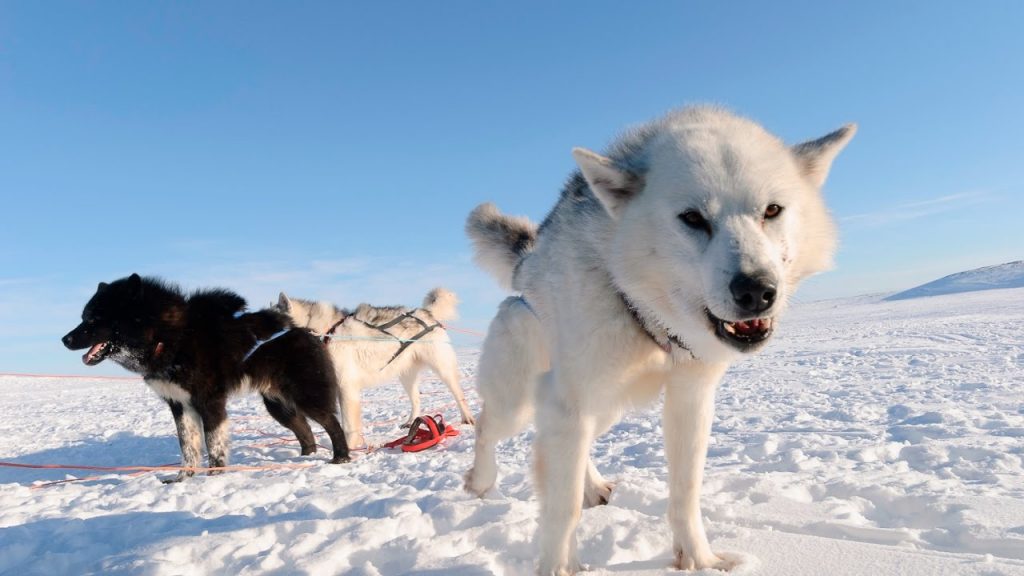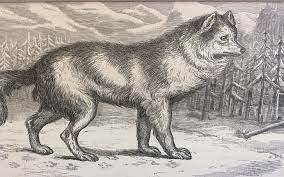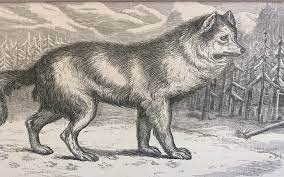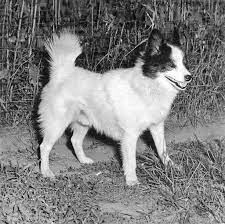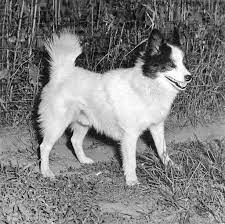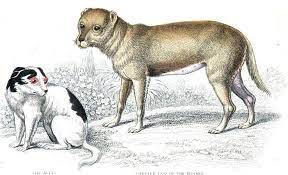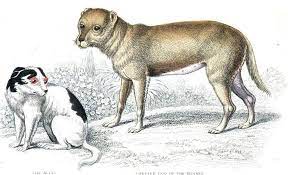Dogs are such sweet creatures. They are cute, deeply affectionate, and fiercely loyal.
For these reasons and more, they have taken over our lives like a storm.
From reducing stress levels to helping you cope with crises and making you feel less lonely, you benefit a lot from simply owning a dog.
The thought of not having your canine buddy is unimaginable.
Ever thought about the history of dogs in America? Precisely, if the native people owned some, and if yes, which ones?
According to Wikipedia, dogs were first domesticated approximately 23,000 years ago in Siberia by Ancient North Eurasians.
Some of them accompanied humans as they dispersed to different parts of the continent.
Those that came to the Americas (before Columbus discovered the continent in 1492), were brought by the first people about 15,000 years ago.
Which are some of these dog breeds?
1. Inuit Sled Dog
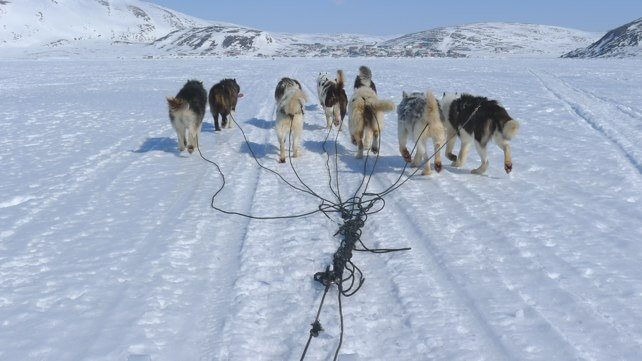
The Canadian Inuit sled dog, also called the Canadian Eskimo dog, dates back as far as 4000 years ago to the Inuit people.
Back then the dogs were mainly used to pull sleds and hunt alongside the Inuits.
The breed is large and strong with the appearance resembling a malamute or a husky.
His head is wedge-shaped and his ears and eyes prickled and almond-shaped respectively.
As for his personality, the Eskimo dog is friendly to those he knows but very aggressive to strangers, especially dogs.
He is a working dog that thrives in completing challenging tasks.
At home, he is affectionate, relaxed, and friendly as long as he is exercised.
Related: How Much Does American Eskimo Dog Cost?
2. Carolina Dog
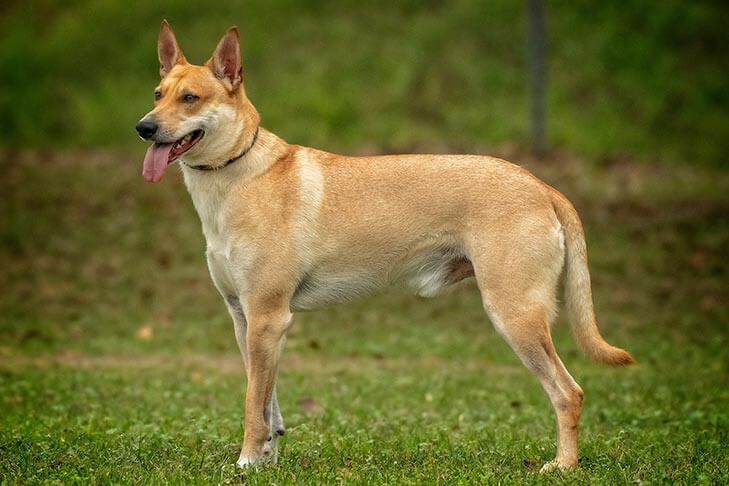
Second on the list, the Carolina dog was transported to North America by the Paleo- Indians via the Bering land bridge.
Thousands of years later, some members of the breed still exist in the wild nearby the Georgian-South Carolina border.
However, some have gone as far as Arizona, Pennsylvania, and Ohio states.
The dogs look like Australian Dingoes with pointed ears, curved tails, and fox-like snouts.
As pack dogs, they are not the most affectionate canines but they do form strong bonds with their families.
Related: Carolina Dog Mix: 7 Amazing Carolina Dog Crossbreeds you’ll want To Own/Adopt
3. Greenland Dog
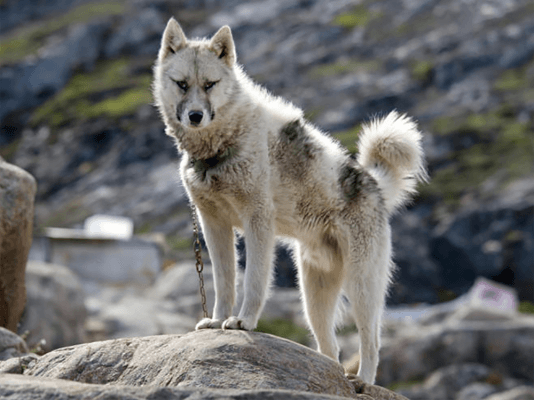
The Greenland dog, a large-husky type breed is also native to America.
Thule people are responsible for introducing the breed to American soil from Siberia more than 1000 years ago.
As a sled dog, the Greenland breed features a thick double coat to help him stay warm in harsh weather.
Every part of his body has thick fur including the tail which is bushy and curved.
Greenland dogs are independent, loving only towards their owners, loyal, and boisterous. Like their counterparts, work makes the breed happy.
4. Alaskan Malamute
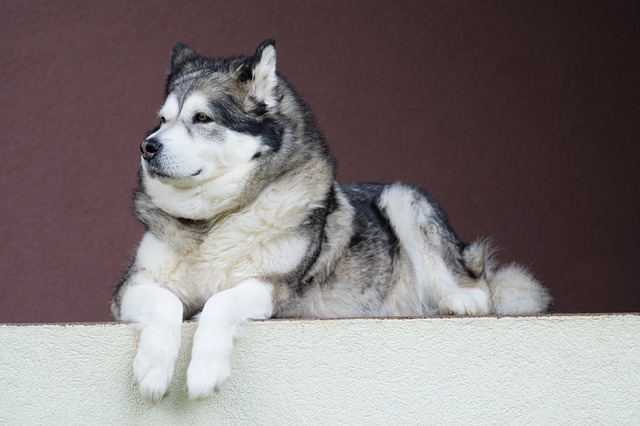
A large and robust dog, the Alaskan Malamute got its name from the region it originated from and its inhabitants – Alaskan Mahlemuts.
These people were known for hunting big game including seals and polar bears.
As such, they needed big dogs as hunting companions.
The Alaskan malamutes scored very well in that department. Now, these dogs are mainly used to pull sleds but also make great pets at home.
5. Hare Indian Dog
The Hare Indian dog is an extinct breed formerly bred by the Hare Indians residing in northern Canada.
It looked more like a coyote than a dog but had the temperament of a domestic pup.
Some of the features included a diminutive slender build, pointed ears, and an elongated muzzle.
The dog went extinct as the aboriginal hunting methods decreased.
6. Salish Wool Dog

Like the Hare Indian dog above, the Salish wool dog is an extinct breed native to America.
It was part of the lives of indigenous Salish people living in Washington State, the Strait of Georgia, and Vancouver Island.
However, European settlers took over the states and began spinning wool with machines.
Consequently, the Salish wooly dogs declined through the 1800s until 1900 when they went extinct.
7. Tahltan Bear Dog
The Tahltan bear dog was used by the indigenous people of Tahlta who lived in Northwestern British Columbia to hunt bears and other animals.
The Nation referred to it as “our dog” from where the breed got its name.
It was a tiny fox-like dog with thick paws, a bushy tail, and a tapered snout.
It is said that the Tahltans used to carry it around, thanks to its petite frame.
Besides the Tahltans, the bear dog was also common with other tribes such as the Kaska, Tlingit, Sekani, and Tagish.
Sadly, it became ancient in the 1970s or the 80s.
8. Xoloitzcuintle
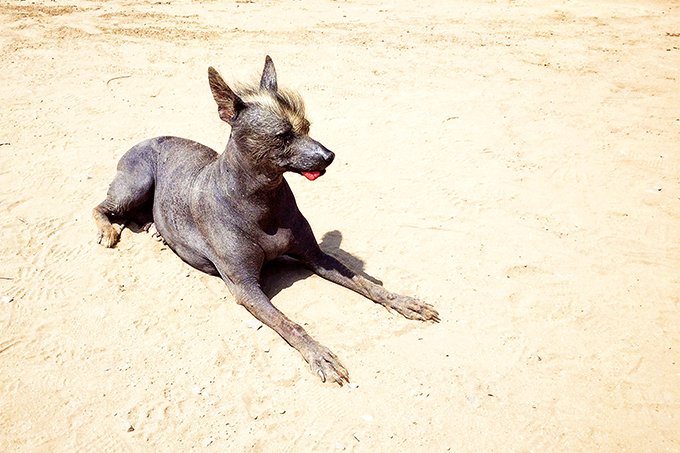
Also called the Mexican hairless dog or Xolo, the Xoloitzcuintle is an unusually-looking dog that originated in the Americas.
This is a typically hairless canine (although there are a few with some hairs on their coats) with wrinkles on his body.
The breed comes in three sizes ranging from 10-55 pounds.
His body is sleek and dotted with large bat ears, almond-shaped eyes, and a long neck.
Xolos have been around for about three millenniums.
9. Techichi
The history of the Techichi goes back to somewhere around 1800BC and 1150AD in Mexico.
It was common with the Maya and Toltec civilizations.
The dog, around 10-20 pounds in weight looked like a bigger version of a Chihuahua.
However, the Techichi featured long coats only.
Like many dogs here, the breed became extinct soon after the introduction of European settlers in America.
10. Chihuahua
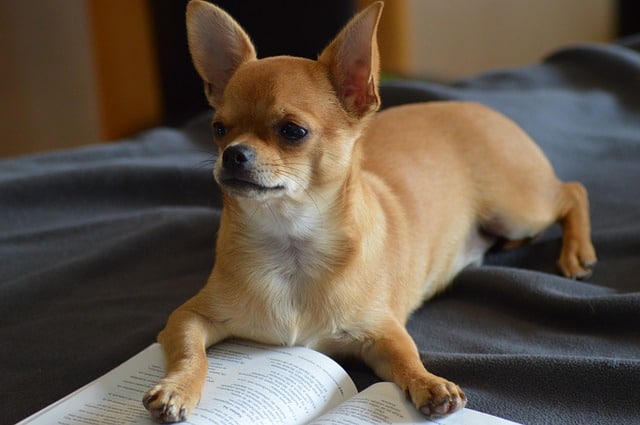
Mexico’s national symbol—the Chihuahua—also makes it to the list of Native American dog breeds.
About a millennium ago, before America was split, this breed lived alongside the indigenous people of Mexico – the Toltecs.
The Chihuahua is essentially the smaller version of Techichi.
The breed came into being after the Aztecs conquered the Toltecs in the 1100s.
The former refined the Techichi into the Chi that we know and love today.
11. Calupoh
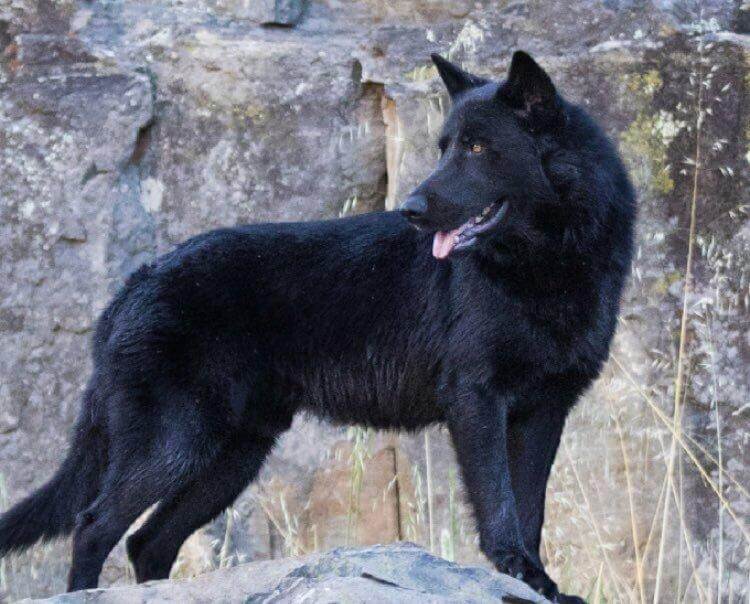
Lastly, the Calupoh is a breed native to Mexico.
The canine was sacred to the Aztecs. It came about from breeding a dog and a wolf.
This is a large dog of 70-75 meters in height and looks like a German shepherd or a husky.
Dog researchers have been developing the Calupoh since the 90s and so far it has been recognized as a domestic dog breed in Mexico.
FAQS about American Native Dogs
What happened to pre-Columbian dogs?
An article by Live Science suggests that pre-Columbian dogs were wiped out by the European colonization of the Americas.
The visitors likely introduced diseases including rabies and canine distemper that killed them.
Europeans also viewed native dogs as pests thus murdering them as they pleased.
A small percentage of the native breeds are still alive today but most of them didn’t make it past the 20th century.
What did Native American dogs look like?
Simply put, Native American dog breeds looked and sounded like wolves. Others resembled coyotes.
Since they were the closest descendants of wolves, it makes sense that the pups would bear these wild looks.
What are some of the extinct Native American dog breeds?
As hinted above, they include:
- Techichi
- Tahltan bear dog
- Indian Hare dogs
- The Salish Wool dog.
How were dogs used by Native Americans?
They bred the dogs to hunt game, protect families, herd livestock, and provide companionship.
Who brought the first dogs to America?
The dogs accompanied Paleo-Indians who migrated from India to the Americas about 10,000 years ago.
When did America become obsessed with dogs?
Going by this piece on CBS News, ownership of pets by the Americans took root after the Second World War.
Part of the reason for this is that more people migrated to the suburbs and got more space to keep pets.
Additionally, the media began portraying the typical American family as having pets.
As such, more people embraced this new way of life.
Economist estimates this time to be around the 1950s and 1960s.
Conclusion
Before the Europeans brought with them most of the dog breeds we are familiar with, Native Americans already owned dogs of their own.
These served many purposes for the then-hunters and gatherers.
While some have gone extinct, others are in existence just to remind us that dogs have been our best friends for millennia.
As an Amazon Associate, we may receive a small commission from qualifying purchases but at no extra cost to you. Learn more. Amazon and the Amazon logo are trademarks of Amazon.com, Inc, or its affiliates.

